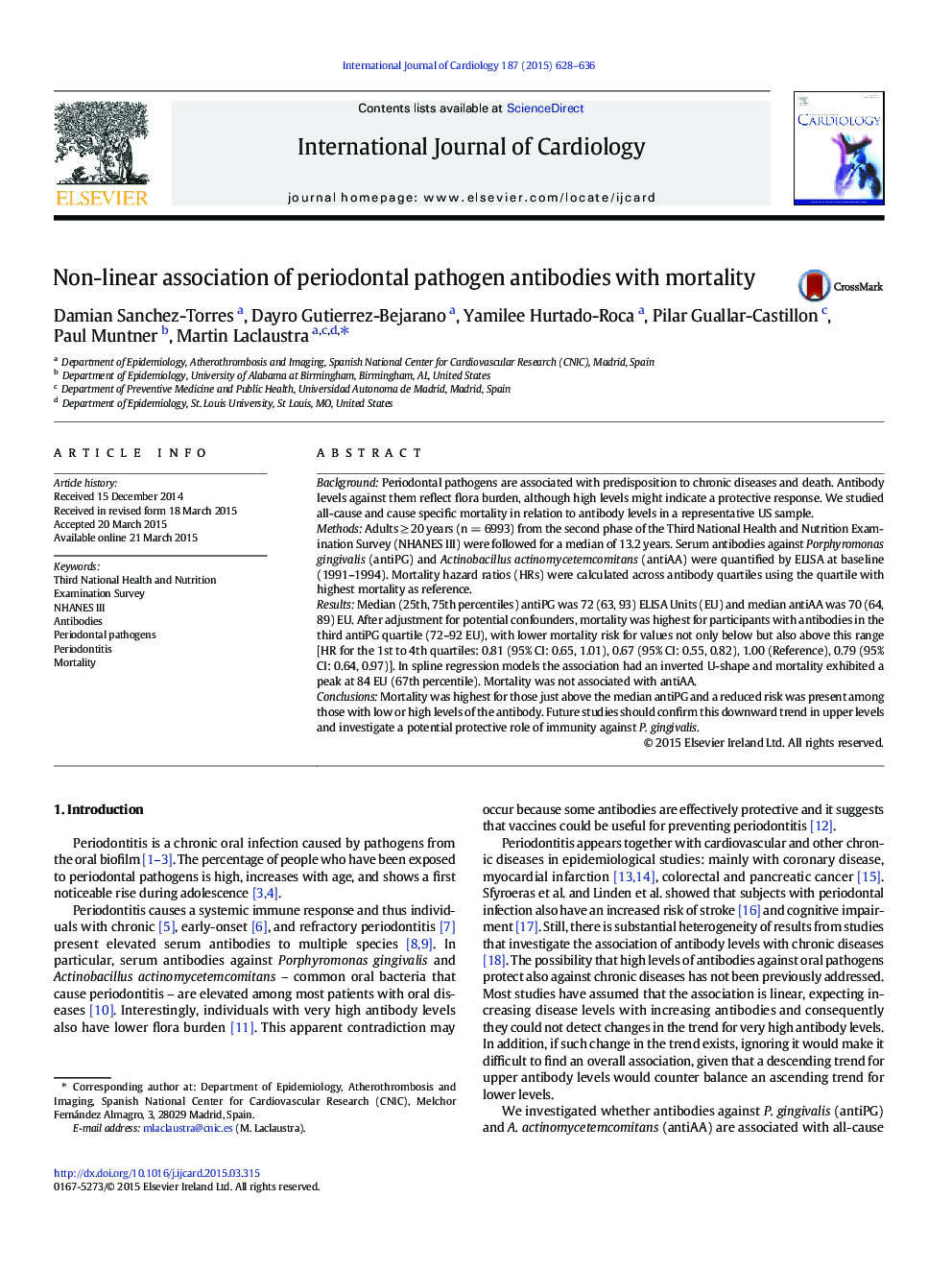| Article ID | Journal | Published Year | Pages | File Type |
|---|---|---|---|---|
| 5967962 | International Journal of Cardiology | 2015 | 9 Pages |
BackgroundPeriodontal pathogens are associated with predisposition to chronic diseases and death. Antibody levels against them reflect flora burden, although high levels might indicate a protective response. We studied all-cause and cause specific mortality in relation to antibody levels in a representative US sample.MethodsAdults â¥Â 20 years (n = 6993) from the second phase of the Third National Health and Nutrition Examination Survey (NHANES III) were followed for a median of 13.2 years. Serum antibodies against Porphyromonas gingivalis (antiPG) and Actinobacillus actinomycetemcomitans (antiAA) were quantified by ELISA at baseline (1991-1994). Mortality hazard ratios (HRs) were calculated across antibody quartiles using the quartile with highest mortality as reference.ResultsMedian (25th, 75th percentiles) antiPG was 72 (63, 93) ELISA Units (EU) and median antiAA was 70 (64, 89) EU. After adjustment for potential confounders, mortality was highest for participants with antibodies in the third antiPG quartile (72-92 EU), with lower mortality risk for values not only below but also above this range [HR for the 1st to 4th quartiles: 0.81 (95% CI: 0.65, 1.01), 0.67 (95% CI: 0.55, 0.82), 1.00 (Reference), 0.79 (95% CI: 0.64, 0.97)]. In spline regression models the association had an inverted U-shape and mortality exhibited a peak at 84 EU (67th percentile). Mortality was not associated with antiAA.ConclusionsMortality was highest for those just above the median antiPG and a reduced risk was present among those with low or high levels of the antibody. Future studies should confirm this downward trend in upper levels and investigate a potential protective role of immunity against P. gingivalis.
